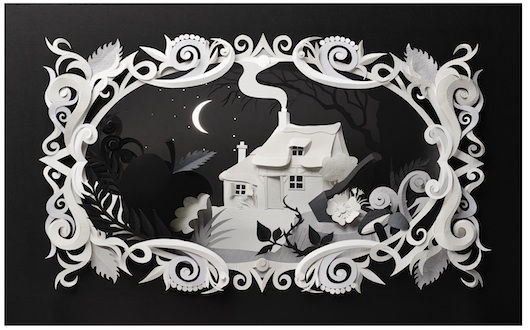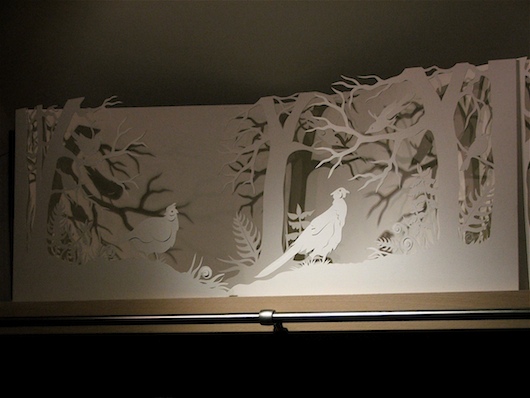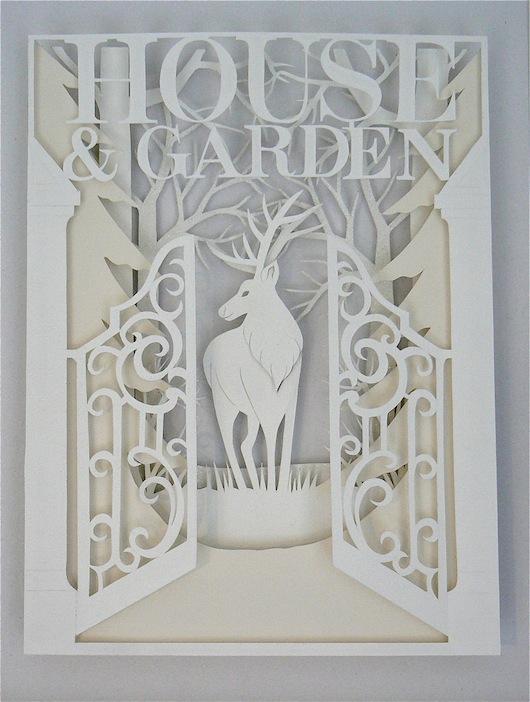Helen Musselwhite

Snow White for Signet, 2014
What was your first break as an illustrator?
My first break was back in 2006 working with Daylesford Organics.
I made some speculative all white framed pieces inspired by the local countryside that they bought for their flagship store in Gloucestershire. They then asked me to design and make Christmas decorations for the produce dept. I made them lots of A1 white paper panels of forest scenes with deer pheasants and partridges.
 One of the original framed pieces I made was subsequently used in a photoshoot of a house for House and Gardens magazine with a small credit to me and where to find my work. I also designed the Homes and Gardens Christmas card that year too.


Dayles Ford, 2006
What was your key motivation in becoming an illustrator?
Aside from obviously fulfilling the brief my key motivation is probably craftsmanship and making sure each piece of work is as well made and beautiful as possible.
Detail is very important too. 
I see each piece of work, whether it’s a private commission or a commercial job as a work of art.
Often working commercially little imperfections are corrected in post but I really try to make it so this is minimal.

House and Gardens, 2006
Your paper cut designs are complex and full of detail, what are the first three steps you take once you have accepted a commission?
Step 1 -†Thumbnail sketches of initial ideas.
 Step 2 – Selection of the best thumbnails and working them up to a larger size with more detail. I always enlarge my thumbnails on a photocopier as I think initial, quick drawings have a vitality that I try to take forward.
I also think about colour at this stage and search through my overflowing and slightly out of control paper stash.
 At this stage I also share with the client/art director.
 Step 3 – Once an idea has been selected I either make a quick mock up (this usually happens for advertising jobs and/or if the budget/times allows) or I go onto the finished artwork, taking progress photos as I go so if anything needs to be changed I can do so fairly easily as I make.
You were recently awarded Overall Winner at the 2014 V&A Illustration awards, how do you think illustrators can benefit from entering a competition such as this?
Illustration competitions such as the V&A’s are great because they have several specialized categories, are free to enter and the V&A in particular is a wonderful seal of approval from a world renowned and venerable institution. 
The judges are regular commissioners of illustration so see a lot of work on a regular basis so to be singled out and chosen as a winner is fantastic. 
The V&A display the winning pieces for a month in the museum to which is a real honour and they also archive every illustration entered on their website from the current and past years.

Endangered Species, 2014
How does your own personal body of work influence your commissioned work?
I often find that elements of my personal work crop up in my commercial work. For instance I made some pieces a few years ago based around the story of Sleeping Beauty and since then I have be commissioned many times for fairytale influenced projects.
 I’m very fond of owls and have over the years made lots of self initiated pieces featuring them so I often add an owl to a commercial job, sometimes they stay sometimes they don’t!
Who and what keeps you inspired?
All the usual things inspire me – the beauty of the natural, particularly the British countryside, folklore, and fairytales, architecture (woodland cabins and little country cottages being favorites) and lots of 19th and 20th century artists, craftsman and creative people.
I’m also pretty addicted to finding colour inspiration and combinations from Pinterest, also love the colours the photo areas are as you scroll down before they load.
Back to News Page
